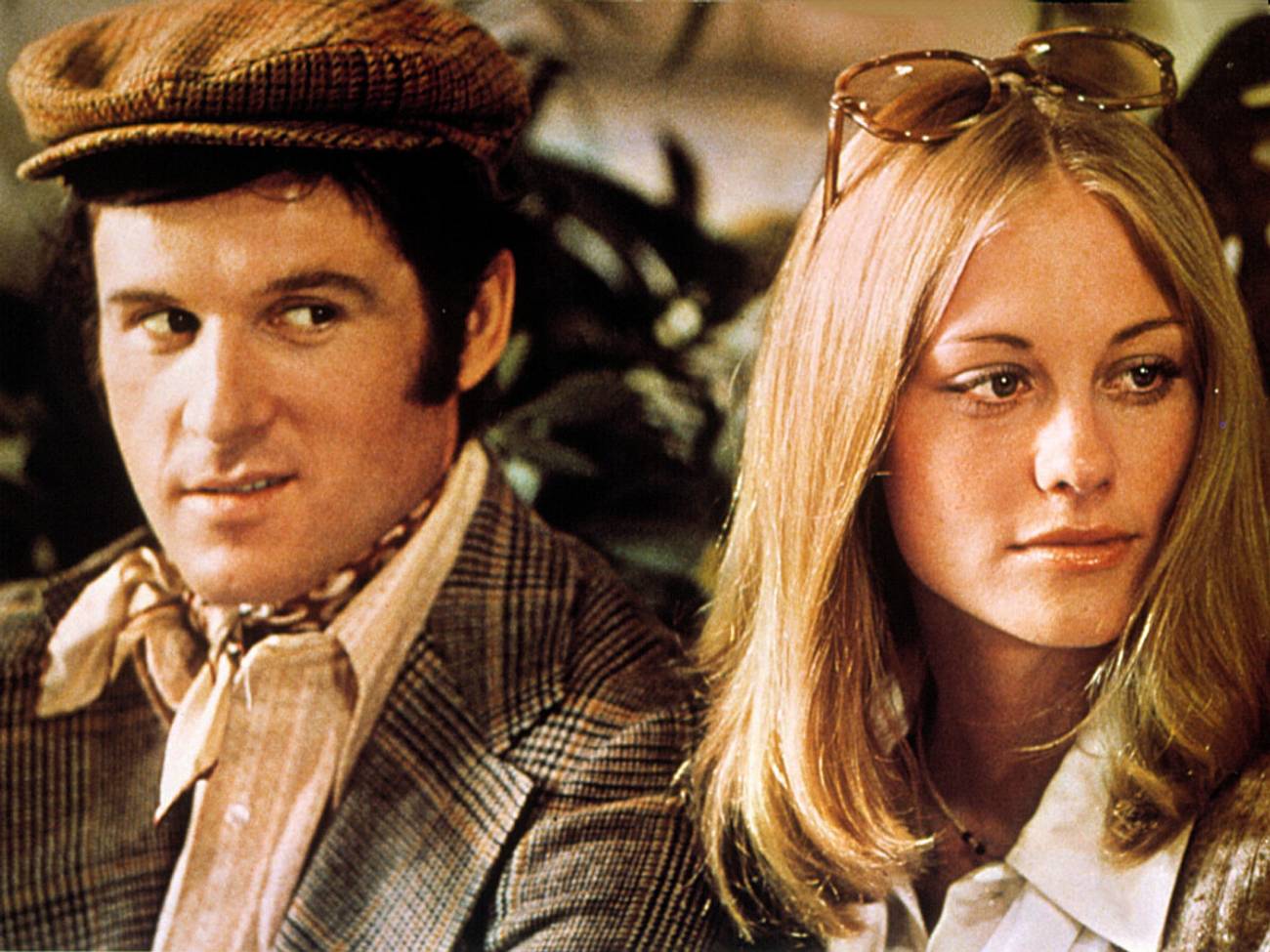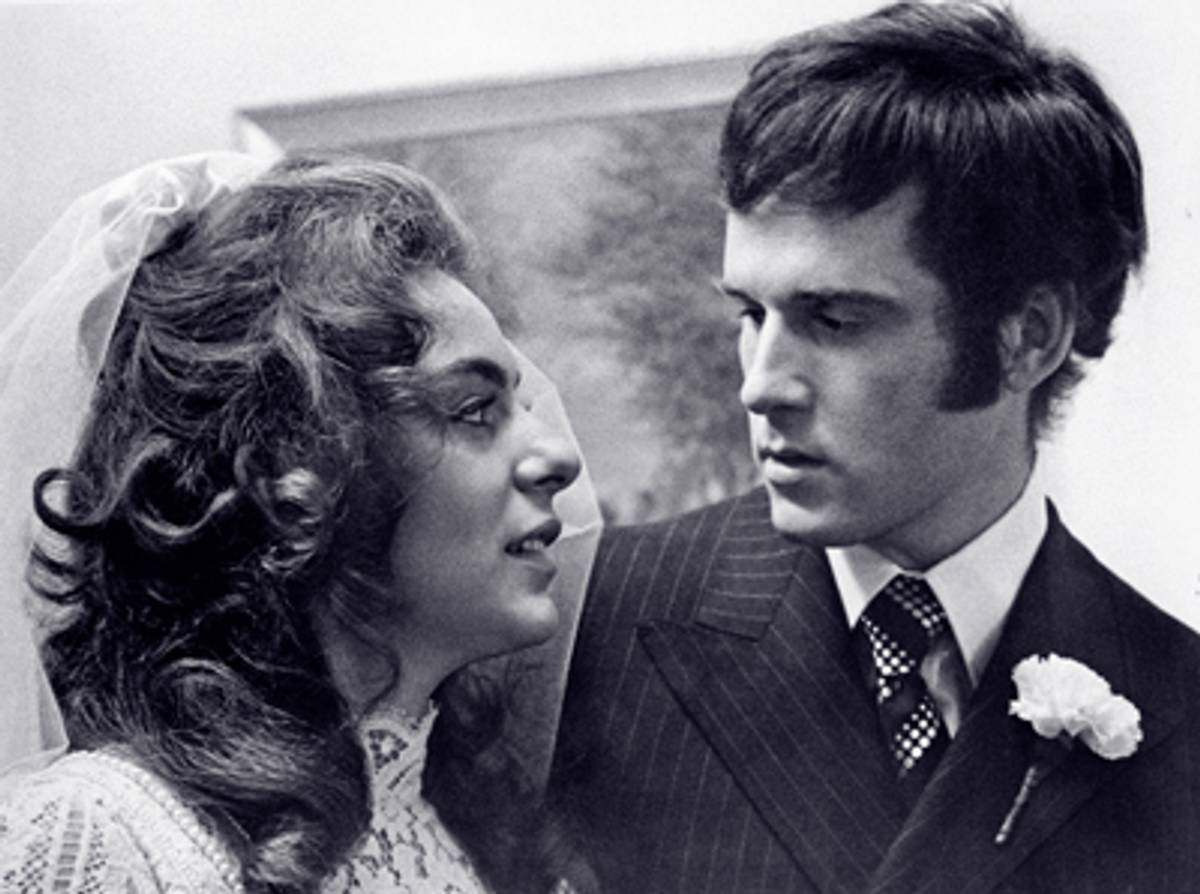And Now, a Major Motion Picture!
What happens to a writer when Hollywood calls?



One night, in the mid-60s, my wife at the time, Ginger Friedman, turned to me and said she had read a short story in Reader’s Digest and loved it. I was suspicious. The magazine rarely printed fiction. What little they published was of a homespun variety.
“You didn’t love it,” I said, after reading the story. “The author hasn’t played fair with the reader. He’s tacked on an ending that comes out of nowhere and doesn’t grow indigenously from the materials he’s presented.”
“I don’t care,” she said, crisply summing up the marriage. “I loved it anyway.”
“Try to stay awake,” I said. It was late at night in Great Neck, Long Island. “I’ll show you a story that will prove my point.”
She agreed. I generally have a few half-formed notions floating around in my head, ready to be topped off at some future point. I went to work on one of them in the attic, a large, comfortable space with a cot, an oaken desk, and a picture window that looked out on the backyards of a cluster of psychiatrists who had been drawn to the neighborhood. I found it perfect for taking naps—and occasionally doing some work.

I had come up with a number of stories in this makeshift “office,” although I don’t recall spinning them off quite so easily, and certainly not in the two hours it took me that night to complete this story. “Change of Plan” deals with a young Jewish man named Leonard Cantrow who gets married, drives to Miami with his bride, and on the second day of his honeymoon sees and falls in love with a blonde, shiksa goddess. Rather than let this remain a fantasy (as the author did in real life) Cantrow declares that his marriage is over, and pursues (successfully) his golden-haired princess to freezing Minnesota.
When I got back to the bedroom, my wife was asleep. Rather than wake her, I put the story in an envelope, and mailed it the next morning to my agent, the soon-to-become iconic Candida Donadio. (Her clients at the time included the relatively unknown Philip Roth, Joseph Heller, Mario Puzo, and Peter Mathiessen.) We’d had some victories before, among them a good many stories and the novels Stern and A Mother’s Kisses. Donadio sent the new piece to Esquire, which bought it immediately. The fiction editor—Robert Brown, by nature a timid man—told me later that he had stormed into the office of the editor in chief, Harold Hayes, flung the story down on his desk, and said, “If you don’t buy this story, I quit.”
“Change of Plan” was published in 1966 without a word changed. Generally, when a story appears, the author might hear from a nephew in Fort Lauderdale, who says he enjoyed it—and it quietly disappears. With great luck, it might turn up in a collection of the author’s stories or, in some cases, an anthology of related pieces. Once in a while, there is a happier scenario. It doesn’t mean the story is better or worse than others—only that it’s hit a nerve. Such was the case with “Change of Plan.” I can’t say that I was immediately “deluged” with film offers, but there were three or four within days of publication, which was deluge enough for me.
The one I found most appealing came from Max Rosenberg, a producer of horror films and Harold Pinter’s Birthday Party. His plan was to do a three-segment film, combining my piece with one by the Irish novelist Edna O’Brien and another by Pinter. Very good company indeed, for the snobbish likes of me. I wrote a screenplay for my story. For the part of Cantrow, the producer had in mind Elliott Gould, who was married to Barbra Streisand at the time. The Rosenberg film was never made, there being a traditional resistance in Hollywood to “anthology films.” Neil Simon and Palomar Pictures (and the director Elaine May) came into the picture then. By then Simon had written a dizzying string of Broadway successes, including Barefoot in the Park and The Odd Couple. To do the screenplay, Simon went off to Majorca, which is where all screenwriters should be fortunate enough to do their film work. Some years later, Edgar Scherick, who produced the movie, told me that Simon had phoned him and said: “I can’t write this. The main character does not have a single redeeming quality.”
“Did he return the money?” I asked.
“No.”
“Then you had nothing to worry about.”
The film was released in 1972 and starred Charles Grodin, Cybill Shepherd, Jeannie Berlin (Elaine May’s daughter) as the rejected bride, and Eddie Albert as Shepherd’s father—a memorable performance for which he received an Academy Award for Best Supporting Actor. It was the first story of mine to be adapted. My feeling about having work adapted, generally, is that once the check is cashed it’s best to cross your fingers and hope for the best. Richard Pryor told me that a writer once complained to him that his novel had been mangled on the screen. Pryor listened patiently, then asked, “Did you get paid?”
But there is no other way to put this—I absolutely loved The Heartbreak Kid. It’s as if I’d sketched out a floor plan and May and Simon had used it to construct a dream house. My story had a different ending. The “hero” becomes enraptured by his new bride’s mother. There is a hint that he will run off with her. In the film version, Grodin, having secured his blonde goddess, sits beside some children at a wedding reception and wonders what he’s accomplished—and what he’s going to do next. I liked my ending and I liked Simon’s. There are others that might have worked as well.
The reception of the film was enthusiastic and became even more so as the years rolled along. Though never a monster at the box office, The Heartbreak Kid settled in comfortably as a “cult classic.” Pauline Kael adored it. Neil Simon considered it his favorite among his movies. Several women’s groups demurred (my first and inevitable “demurred”), feeling that the main character was a bit swinish and his wife treated shabbily. My response to such criticism is to brandish the word “satire”—and to walk away quickly.
After the film’s release, I met Simon for the first time and asked him how he could have gotten into the mind of the main character.
“I pretended I was you.”
“But you’ve just met me.”
“Didn’t matter. I’d read your books. And for God’s sakes, couldn’t you have made the story a bit longer?” (and, by implication, made his job easier).
I could have written more, of course, but it was stuffy in the attic and I was racing to go downstairs before my wife fell asleep.
Despite his quibble about the story’s length, Simon was more than kind to me in the future. A decade later, he turned my book The Lonely Guy’s Book of Life into the Steve Martin film The Lonely Guy. (Alert: self-serving anecdote coming up.)
At a speaking engagement in East Hampton, an audience member asked Simon why, in the way of other playwrights, he hadn’t done more adaptations.
“I only adapt Friedman,” he said.
I’d sold the rights for a modest sum—“found money,” I felt—and cheerfully went about my business. But one morning I received in the mail an envelope from Bristol/Myers Squibb. Probably a toothpaste sample, I thought, and tossed it into the wastepaper basket. Then I realized that I really enjoy trying out new toothpastes, not to mention that I was a bit down at the heels at the moment. I retrieved the envelope. Inside was a royalty check for $25,000 (the company had been an unlikely backer of the film), a princely sum at the time and hardly a disgraceful one now.
Simon thought, at one point, that the movie would be a good basis for a Broadway musical. I’m told that he auditioned several composers (one of them, Edward Kleban, the poor man who wrote the lyrics and co-wrote the score for Chorus Line) none of whom quite worked out. Among the rejected ones was Dorothy Fields, who had written 400 songs, among them one of my favorites, “The Way You Look Tonight.” Fields sought me out and insisted on my giving her a second opinion. I agreed to meet her at a steakhouse called Nickels on the Upper East Side. She was a large, 60ish woman with an operatic style, who appeared not to be as robust as she might have been some years before. We took a corner banquette in the crowded restaurant. Before I could take a sip of my drink, she burst into “Lila’s Lament”—a song she had composed for the rejected wife. With a packed restaurant of stunned diners looking on, she sang full-throatedly, looking directly at me, and making a variety of faces to match the sentiments of the lyrics. Since I’d never been sung at publicly, and at such great volume, I wasn’t quite sure of how to react and tried a variety of expressions, mostly soulful, in response to hers. I understood why it hadn’t worked out for Simon, but I did feel awful for Fields, who died soon afterward.
Thinking back, I suppose those days were heady ones for me, though they didn’t seem so at the time. I thought this was the way things were supposed to be. After struggling for a decade, I’d published two successful novels. My short stories were being snapped up as fast as I could write them—or so it seemed—and the first two plays I tried (Scuba Duba and Steambath) were hits, a term that my British friends find offensive. In the great tradition, I was “flown out to the Coast” to write the Lenny Bruce story. When I backed away, I was offered a substantial sum to “stay interested” for another month—money that I earned, incidentally, by reading truckloads of Bruce correspondence and depositions. Soon afterward, I was “flown out” once again to write the screenplay version of the play Owl and the Pussycat, which eventually starred Barbra Streisand and George Segal. The most notable part of that experience was having the actress Natalie Wood assigned to me as a secretary. I didn’t think I needed a secretary, but Ray Stark, the producer, insisted that I have one and sent over the star of Splendor in the Grass. She was good at the job, although, perhaps understandably, I tensed up a bit during our sessions. (It’s my understanding that her psychiatrist recommended she take a job away from acting to help her with her depression.)
My feelings about Hollywood have always been ambivalent. Generationally, as a novelist, my heroes were the usual suspects: Hemingway, Faulkner, Fitzgerald. Scribner’s—not Warner Brothers—was the temple, and the editor Maxwell Perkins was the High Priest. Screenwriting, at the time, was considered sort of down market. There were women in Greenwich Village—trust me on this—who wouldn’t consider you as a lover if you worked on films, or if you “sold out” and “allowed” your novel to be bought by the movies (which is what we called them until “film” took over.) After I’d written Stir Crazy, which was released to much success in 1980, the starry-eyed young attorney who handled the contract told me that I was “the hottest writer in Hollywood.” The thought so horrified me that I disappeared for a year and wrote a novel, Tokyo Woes—a “purifying” effort that doubled back on me when the rights were sold to a film producer.
Having said all this (a favorite term used by producers who are preparing to give an inch—and no more) the film world has always treated me generously. My efforts were professional, but I always felt, often correctly, that I was being rewritten as I wrote. Others, as usually happens, were called in—sometimes by the dozen—to “improve” my work. And improve it they occasionally did. Mario Puzo was paid a million dollars for the screenplay of The Cotton Club—and there is not a single line of his dialogue in the film. It’s the nature of the beast, and on occasion it can be a handsome beast indeed. But it requires that the writer be a team player, and in that sense I never entirely measured up. It’s fun to see your name on the Big Screen. But I’ve never felt that pride of authorship that comes along with the publication of a novel, or short story, or, for the most part, a play. There are so many hands, many of them gifted, that touch the great machine that becomes a movie—even an awful one. And no one needs me to point out that it’s the director who “writes” the movie—although honorable men (and alright, women) have come to blows on this point.
My involvement in The Heartbreak Kid was the most pleasurable of my Hollywood adventures. I enjoyed the subsequent success of Stir Crazy and Splash—both written directly for the screen—and how could I not? But to the extent that I have a sensibility, it was the Neil Simon adaptation that picked up on it. And apart from the two hours in the attic, all I had do was sit back and enjoy the ride. No meetings, no huge sheaves of the dreaded “notes” that eventually drove me away from what is now called The Industry. All I had to do was show up at a theatre and enjoy the movie. It was certainly far better than anything I could have achieved on my own.

The Heartbreak Kid has been remade, this time by the Farrelly Brothers, starring Ben Stiller, and will be released this Friday. I haven’t seen the script or the film, although I’m told by an agent that it is “vulgar and hilarious.” (The very words used to describe the plays of Aristophanes, incidentally.) Once again, there is very little for me to do except to watch the movie, take full credit for anything that‘s exceptional, and to deny involvement with any parts that aren’t.
There are some who feel more possessive about The Heartbreak Kid than I do. Why do it again? Why fool around with a classic comedy? For one thing—small matter—I don’t control the rights. And even if I did, my allegiance is always to the original story. There have been more than a hundred productions of my play Steambath. I’ve never felt it would be useful to run around the country and try to oversee the all-lesbian or all-black approaches to the play. Didn’t my grandmother have a Yiddish expression for my feelings? Luzhem spielen—“Let them play”?
Nothing much more of any note came out of that momentarily magical attic. We sold the house soon afterward. But though the story “Change of Plan” flourished, the marriage, alas, did not. A divorce followed a few years later—not, I would hope, as a by-product of the story. I’m told that a psychiatrist moved in at one point and may be sitting in the attic now, hard at work on a screenplay.
Bruce Jay Friedman (1930-2020), a novelist, short story writer, playwright, memoirist, and screenwriter, was the author of nineteen books, including Stern and Lucky Bruce: A Literary Memoir. His last collection of short fiction is The Peace Process. He died at age 90 on June 3, 2020.